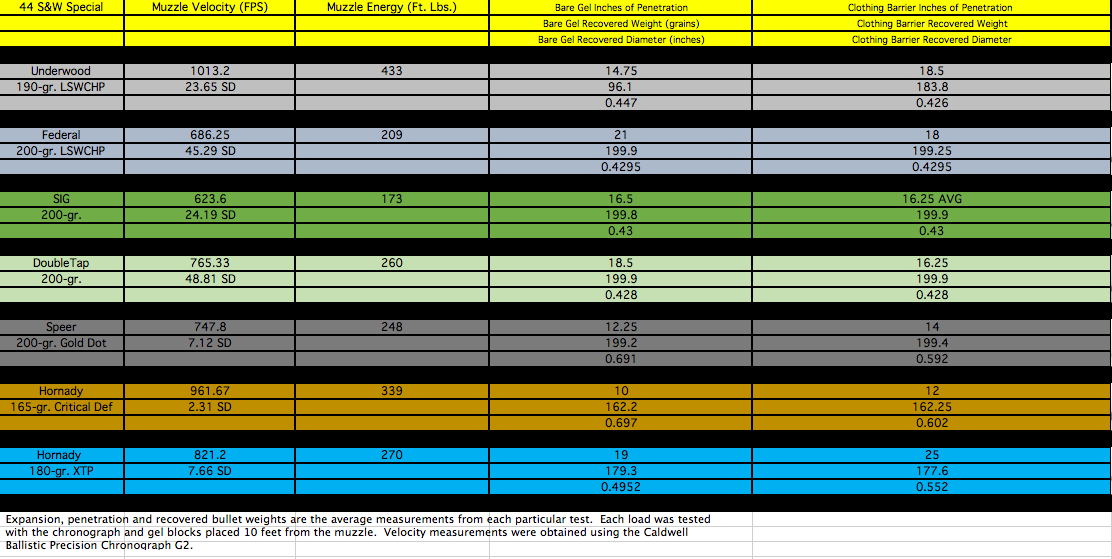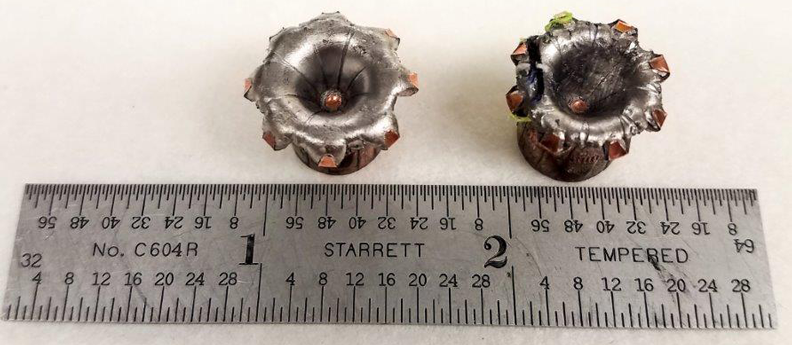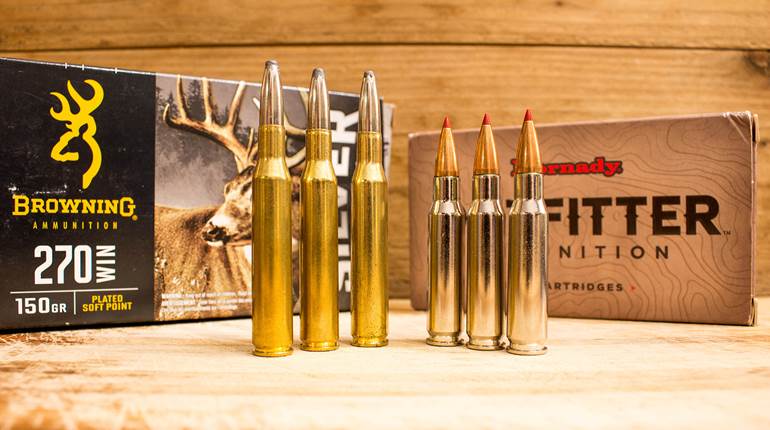
The .44 Special was introduced more than 100 years ago, and is a modernization of 19th century .44-cal. revolver cartridges made for blackpowder. It is well-regarded by target shooters and may very well be one of the world’s most inherently accurate handgun cartridges. As such, the .44 Spl. has primarily been factory-produced in target loadings with soft-lead bullets. Pressures and velocities listed in loading manuals and in factory ammunition from major manufacturers have always been on the mild side due to the SAAMI maximum pressure limit of 15,500 p.s.i. Handloaders have always known about the .44 Spl.’s penchant for accuracy but they’ve also known that the .44 Spl. is capable of substantially higher velocities and have been hot-rodding the .44 Spl. probably as soon as the first piece of brass was available for reloading. Unfortunately, none of these hotter loads are SAAMI-approved nor recommended.
The .44 Spl. reached its zenith in performance in the hands of Elmer Keith. Keith loaded the old .44 Spl. well above the standard pressure limit and, thanks to his work, the .44 Spl. became the .44 Mag. Despite being nearly killed off by the popularity of the .44 Mag., the .44 Spl. is still being produced by a number of ammunition companies, both big-name and not-so-big-name. Revolvers chambered for the old cartridge come and go but both Ruger and Charter Arms are currently making handguns for the old Special and it seems to be making somewhat of a comeback in popularity.
As a defensive cartridge, there are a number of factory hollow-point offerings, so I thought it would be interesting to see how this classic revolver cartridge might fare when tested using some modern criteria. Given the number of self-defense loads in this cartridge, it seems evident to me that there is a fairly strong consumer demand for defensive .44 Spl. ammo. Hollow-point bullets are available as components and it is possible to easily exceed factory performance with handloads, but I stuck with factory ammo due to the liability concerns of using handloaded ammunition for personal protection.
Bullet technology may have improved over the last several decades but the mechanics of incapacitation have not. In order for a bullet to be effective in a self-defense role it must penetrate deep enough to reach vital organs. It should also expand; thereby increasing the permanent wound cavity and increasing the chances of damage to the critical internal workings of the body. Bullets that fail to penetrate deeply may be partially stopped by bone, fat or muscle tissue. Conversely, bullets that over-penetrate may pose a risk to innocent bystanders or anyone who happens to be downrange. With these points in mind, it is nearly universally accepted that ideal penetration for defensive ammo is between 12” and 18”. To reach the required penetration, the bullet needs to be driven at sufficient speeds to force its way through clothing and other barriers, yet it must not be driven so fast that it fragments or over-expands to the point that it loses velocity and under-penetrates. 
I chose to test the chosen loads for accuracy as well as penetration and expansion. Accuracy was tested from a sandbagged rest at a distance of 25 yards. Velocities were taken 10 feet from the muzzle. Five individual groups of five rounds was fired with each load using a Smith and Wesson Model 629 with a 4” barrel. The Model 629 is a very common and popular revolver and proved to be quite accurate and pleasant to shoot. Expansion and penetration was tested using 10 percent ballistics gel from Clear Ballistics using the newly introduced Ruger GP100, which should prove popular as both a self-defense handgun for concealed carry as well as for those who choose to carry a revolver as a general purpose firearm. Two rounds of each load were fired into bare gel from 10 feet to establish a baseline for performance. Three rounds of each load were then fired through two layers of cotton shirt material, a layer of Polartec 200 fleece insulation and a layer of denim. This simulates the heavy clothing barrier as used by the FBI and other law enforcement agencies to test hollow-point effectiveness.
As can be seen from my results, many of the .44 Spl. loads are quite underpowered and either failed to meet the required penetration specs in one manner or another or failed to expand and over-penetrated. One load showed impressive expansion in both bare gel and through clothing but was, unfortunately, the least accurate load tested. Based on my limited testing here, it would seem that the Speer Gold Dot is the best choice for defensive use. The Gold Dot was accurate, showed consistent expansion and penetration, and retained most, if not all, of its bullet weight. I must admit entering into this project with a fairly closed mind. By that I mean I had already formulated the opinion that the .44 Spl. was going to be an excellent performer. Unfortunately, that doesn’t appear to be the case with many of the loads tested for this article, and I would be hard-pressed to choose some of these hollow-point loads over less expensive jacketed or lead-round nose offerings. 
Speer Gold Dot
The .44 Spl.’s history is quite similar to the .38 Spl. but without the happy ending. The .38 Spl. has been around for over 100 years and has become a mainstay for revolver and ammunition manufacturers alike, for good reason. The .38 Spl. works equally well as a target cartridge, a self-defense cartridge and a cartridge for hunting small game. While the .38 Spl. has worked well in the aforementioned regards, the desire for higher velocities lead to the creation of the .357 Mag. As is well known, the .357 Mag. is basically a slightly longer version of the .38 Spl. This extra length isn’t necessarily needed for additional powder capacity but rather to keep the hotter Magnum ammunition from being chambered in older or less durable firearms designed specifically for the .38 Spl.
Like the .38 Spl., the .44 Spl. has been with us since the turn of the 20th century and much like the .38, the .44 Spl. has garnered a reputation for accuracy and is respected as a target cartridge. Unlike the .44 Spl., the .38 Spl. has not been crippled by its outdated pressure limit, having been given a +P SAAMI pressure standard several decades ago.
For comparison, another big-bore cartridge that’s a contemporary to the .44 Spl. is the .45 Automatic. While this cartridge is most commonly associated with the Model 1911 Government Model, it was also used in the Colt and Smith and Wesson Model 1917 revolvers. Both of these old firearms served in wartime and both seemed to have held up fine to the pressure limit of 21,000 p.s.i. It is my belief that loading .44 Spl. ammo to a similar pressure limit would do wonders for the .44 Spl. as a defensive or even hunting cartridge without dramatically increasing the felt recoil or adding undue wear and tear to the shooter or the firearm.
There is something heartwarming about shooting this old cartridge even though it has not matured with the passage of time. It ties the shooter back to a bygone era when men drank whiskey and smoked cigars and big-bore wheelguns ruled the range. Shooting the old .44 Spl. is like shaking hands with old-time greats such as Skeeter Skelton and Charles Askins, and it brings a kinship not found with much else in the handgunning world. It really is time the industry gives this grand old cartridge a facelift!





































